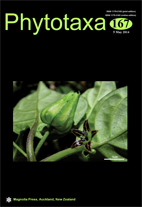Abstract
The genus Willea Schmidle (1900a: 157) was created based on Crucigenia irregularis Wille (1898: 317), a species described as having no pyrenoid but later discovered to be present, although often indistinct (Komárek 1974). The same year Lemmermann (1900b) described the new genus Crucigeniella Lemmermann (1900b: 307, 308), based on differences in cell arrangement and morphology and presence or absence of cellular spaces, with Crucigeniella lunarisLemmermann (1900b: 308) as the type species. Later, Lemmermann (1904, p. 22) transferred Willea irregularis(Wille) Schmidle (1900a: 157) to the genus Cohniella Schröeder (1897: 373) despite having placed it earlier (Lemmermann, 1900a, p. 95) in Tetrastrum Chodat (1895: 114), a genus, in which the cells usually have distinctive marginal spines. His decision to recognize Cohniella irregularis (Wille) Lemmermann (1904: 22) and create two sections/subgenera distinguished by the presence or absence of margins spines has not been accepted. Cohniella irregularis was placed in the synonymy of Willea irregularis by Komárek (1974, p. 41), who discounted pyrenoids as a generic character (p. 11) and emphasized the taxonomic importance of the arrangement and orientation of daughter cells within the mother coenobium. He separated Willea from Crucigeniella on the basis that the long axes of the daughter cells of the latter were not always aligned to that of the mother coenobium and occasionally were at an angle of 90º to it. In addition to the type of Willea (W. irregularis), a second species was recognized when Komárek (1974, p. 42) transferred Dispora vilhelmii Fott (1933: 168) to the genus Willea.

